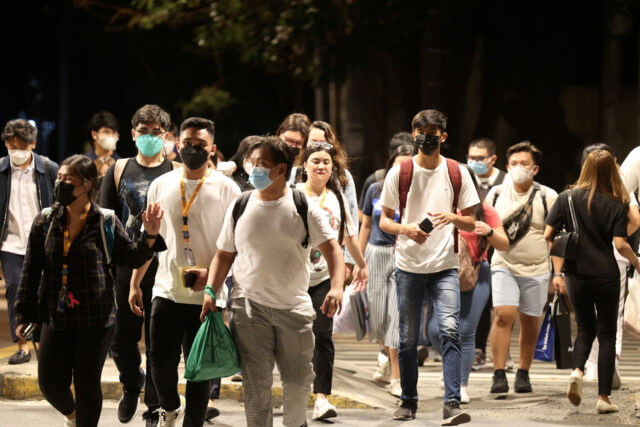
MOODY’S INVESTORS SERVICE on Thursday kept the Philippines’ “Baa2” credit rating with a “stable” outlook, as economic recovery is unlikely to be hampered by “challenging global credit conditions.”
In a statement on Thursday, the credit rater affirmed the country’s long-term local and foreign currency issuer and senior unsecured ratings at “Baa2.”
“The rating action is driven by Moody’s view that the challenging global credit conditions will not derail the Philippines’ ongoing recovery from the coronavirus pandemic, although the severity of the pandemic shock has led to an erosion in the rating agency’s assessment of economic strength,” it said.
Moody’s has kept its “Baa2” rating for the Philippines since December 2014.
Meanwhile, the “stable” outlook suggests the rating is likely to be maintained in the next six months to two years.
“Moreover, continued policy orthodoxy and commitment to reform amid political transition will help to assure gradual fiscal repair following the reversal of the strengthening of the government’s fiscal and debt metrics resulting from the pandemic,” Moody’s said.
It said the Philippines remained fundamentally strong “with regards to the stability of its banking system and the capacity to meet external debt repayments, notwithstanding cyclical pressures on the balance of payments and consequent exchange rate depreciation.”
Moody’s said the economic rebound has been strong, adding the Philippines would be resilient amid near-term global credit tightening.
While the Philippines is not significantly exposed to Russia, the European Union is a major source of investments and one of the main destinations for goods and services, it said.
“Moody’s sees sufficient momentum to support real GDP growth of 6.6% for 2022 and 6.2% for 2023, as price pressures are set to moderate as commodity prices ease from peaks recorded earlier this year,” it said.
Moody’s 6.6% gross domestic product (GDP) forecast for the country is at the lower end of the government’s 6.5-7.5% full-year target.
“Over the long term, Moody’s continues to view the Philippines as characterized by higher economic growth relative to most Baa-rated peers, with favorable demographics balanced against a heightened susceptibility to environmental risks given the high incidence of climate-related shocks,” it said.
“However, strict and prolonged pandemic containment restrictions contributed to a delayed recovery from the coronavirus shock, in turn leading to severe economic scarring — as represented by one of the largest cumulative economic output losses among rated sovereigns — and a deterioration in Moody’s assessment of economic strength.”
The Philippine government implemented one of the longest and most stringent lockdowns in the world to contain the coronavirus pandemic in 2020 when the country’s GDP contracted by 9.6% .
Moody’s also pointed out that economic scarring from the pandemic, such as the prolonged shutdown of schools and rise in poverty, “has the potential to curtail potential growth over the long-term if left unaddressed.”
The credit rater said it expects the government deficit to gradually narrow from 5.8% of GDP in 2020 to 4% in 2022 and below 3% in 2023. As of the first quarter, the budget deficit as a ratio of GDP stood at 6.4%.
“Based on Moody’s projection of general government debt peaking at around 54% of GDP in 2022, the Philippines’ government debt burden remains consistent with its Baa-rated peers, while its debt affordability did not significantly deteriorate following the large pandemic-induced rise in debt since 2019,” Moody’s said.
“Moreover, the Philippines’ external position remains comfortably positioned to meet forthcoming cross-border debt servicing obligations and weather capital flow volatility owing to tightening global liquidity conditions, notwithstanding the weakening of the current account, an erosion in the stock of foreign currency reserves and related depreciation of the peso since early 2022.”
For the year so far, the peso has weakened by P6.16 or 12.07% from its Dec. 31, 2021 close of P51 a dollar.
Moody’s said the “stable” outlook “reflects the view that the recovery from the acute shock posed by the coronavirus pandemic will restore rapid economic growth relative to peers, complemented by the stabilization and eventual reversal of the deterioration in fiscal and debt metrics.”
“This scenario is balanced against the risk that the economy’s potential is damaged more significantly than Moody’s currently assumes, or that fiscal and economic reform momentum does not resume, leaving the Philippines’ economic and fiscal strength somewhat weaker,” it added.
In May, S&P Global Ratings affirmed its “BBB+” long-term credit rating with a “stable” outlook for the Philippines, while Fitch Ratings kept the country’s credit rating at “BBB” and its “negative” outlook. – K.B.Ta-asan
Moody’s affirms PHL credit rating
Source: Bantay Radio
0 Comments